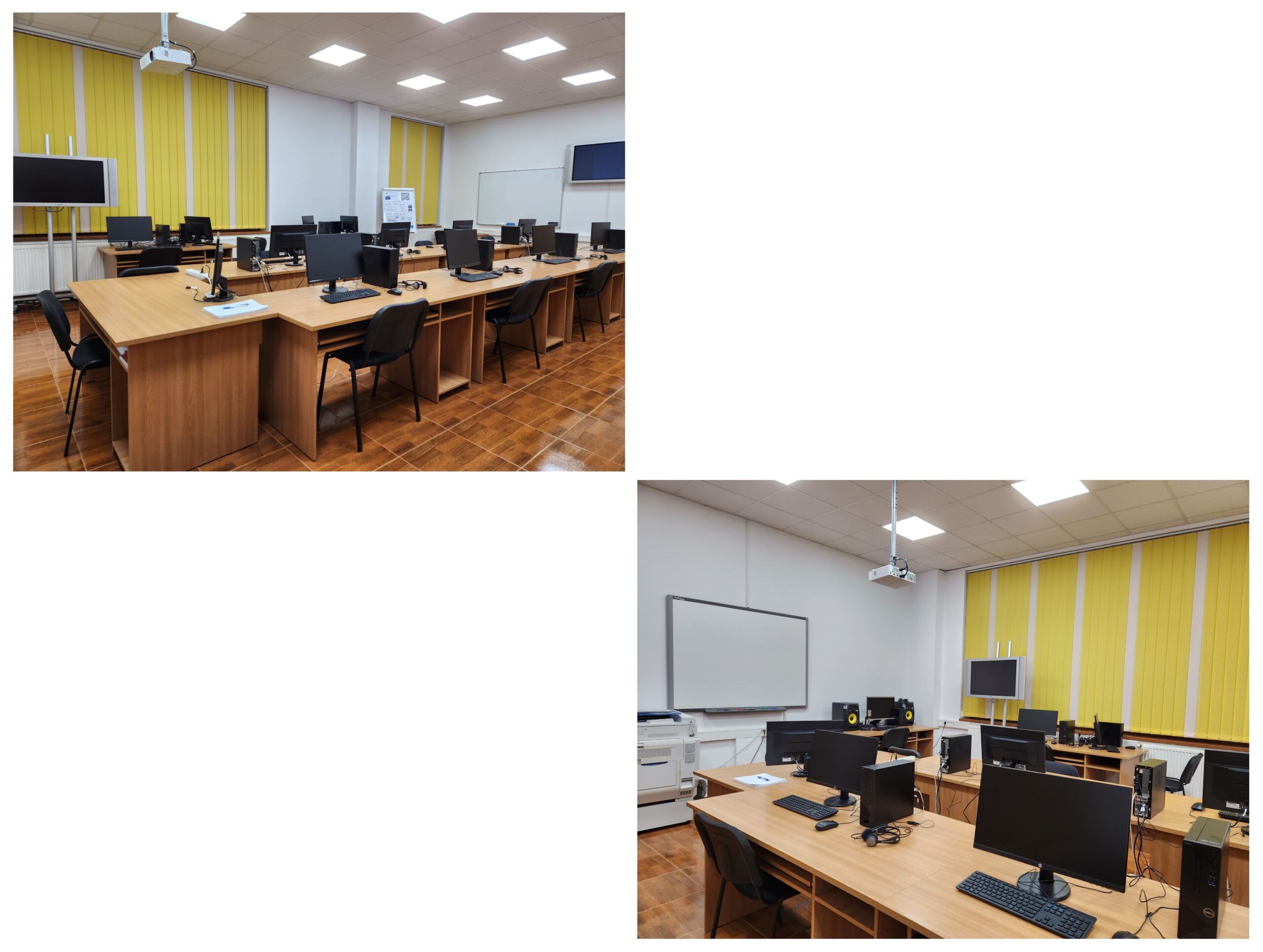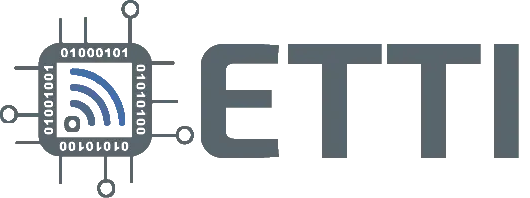Digital Signal Processing and Artificial Intelligence Laboratory
Description
The Digital Signal Processing and Artificial Intelligence Lab is situated in the Leu campus, building B, ground floor, room B029, and is a part of the Department of Electronic Devices, Circuits and Architectures (DCAE), Faculty of Electronics, Telecommunications and Information Technology (ETTI), National University of Science and Technology POLITEHNICA Bucharest.
Coordinated by the Speech and Dialogue (SpeeD) Laboratory staff, this lab is used for both teaching activities and research and development. The courses held in this room are part of the Bachelor’s program curriculum, as well as the curriculum of the Multimedia Technologies in Biometrics and Information Security Applications (BIOSINF) Master’s program that is coordinated by the Speed Laboratory staff.
Room details
- Room number: B029
- Room size: 70 sq.m.
- Number of seats / workstations: 24 / 14
Hardware & software resources
- Server: IBM x3650 (Intel Xeon E5430 Quad-Core,2.66 GHz CPU)
- 15 computers: DELL Vostro (Intel Core i5-10400F 2.9 GHz CPU, Nvidia GeForce GT 730 2048 MB GPU, 256 GB SSD + 1 TB HDD, Windows 11 OS); HP P24v G4 FHD 23.8 inch IPS monitors; professional headsets (Sennheiser PC-131 / PC-132) for audio applications
- Professional audio system: Mbox Pro soundcard package with ProTools 9 DAW, Sennheiser George Neumann TLM 102 microphone, KRK RP8g2 audio monitors
- 18 development kits: NVIDIA Jetson Nano for machine learning applications
- 4 digital oscilloscopes (Tektronix 2014B), 3 function generators (Tektronix 3021B), 2 digital multimeters (Picotest M3500A)
- Interactive whiteboard, SANYO video projector; 2 SONY 50″ plasma screens; Gestetner MPC2500 printer
- Local network: structured, high-speed Internet connection
- Software suite: MATLAB R2023b (toolboxes: DSP System Toolbox, Signal Processing Toolbox)
- Software suite: Python 3.11 (Anaconda distribution; IDEs: Spyder, Jupyter Notebook; additional packages: TensorFlow, Keras, scikit-learn)
- Software suite: Visual Studio Code, NVIDIA JetPack SDK
- Software: Audacity 3.4.2, VLC 3.0.20, openSMILE 3.0.1, WaveSurfer 0.9, Kinovea 0.9.5, Notepad++ 8.6.2, software virtualizare KVM, OS Ubuntu Server, GNS3, Speech Brain
- Microsoft Azure cloud services
- Zevo Tech services (Live STT, TTS)
- Speech processing datasets: SUSAS (LDC99S78), CSR-I WSJ0 Complete (LDC93S6A), YOHO Speaker Verification (LDC94S16), SPINE Training Transcripts (LDC2000T49), Communicator Evaluation (LDC2003S01), NIST Speaker Recognition Evaluation Test Set (LDC2011S08), NIST Speaker Recognition Evaluation Training Set Part 1 (LDC2011S05)
Teaching activity
- Digital Signal Processing (Bachelor’s program curriculum, 3rd year, series E)
- Advanced Techniques in Digital Signal Processing (Bachelor’s program curriculum, 4th year, series E)
- Biometric Technologies. Speech and Biological Signals Analysis (BIOSINF Master’s program curriculum, 1st year)
- Artificial Intelligence I: Classical Machine Learning Systems (BIOSINF Master’s program curriculum, 1st year)
- Forensic Expertise Methodology (BIOSINF Master’s program curriculum, 1st year)
- Resarch and Documentation Project (BIOSINF Master’s program curriculum, 1st year)
- Artificial Intelligence II: Deep Neural Networks (BIOSINF Master’s program curriculum, 1st year)
- Voice Communication Interfaces with Intelligent Systems (BIOSINF Master’s program curriculum, 1st year)
- Artificial Intelligence Applied in Speech Forensics (BIOSINF Master’s program curriculum, 1st year)
- Research Project in Speech Technology (BIOSINF Master’s program curriculum, 1st year)
- Artificial Intelligence III: Advanced Techniques for Developing Machine Learning Systems (BIOSINF Master’s program curriculum, 2nd year)
- Security in Computer Networks (BIOSINF Master’s program curriculum, 2nd year)
- Audio-Video Forensics (BIOSINF Master’s program curriculum, 2nd year)
- Artificial Intelligence for Embedded Systems (BIOSINF Master’s program curriculum, 2nd year)
- Integrated Research Project in Computer Security (BIOSINF Master’s program curriculum, 2nd year)



